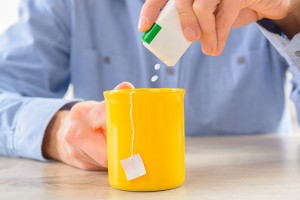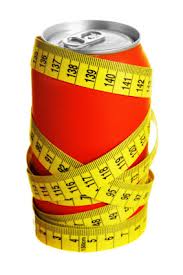You probably heard bad things about many artificial sweeteners; we could call it the quagmire of artificial sweeteners. If you did, you are not alone. The history of artificial sweeteners is full of surprises and power struggles. On Jan.18, 2016 CNN reviewed the most common sweeteners.
Here is a brief review of the most common sweeteners.
Saccharine
This sweetener’s history goes back to 1879 when the Russian chemist Constantin Fahlberg first noted experimenting with coal tar compounds that one of the end products, benzoic sulfanide tasted sweet. In fact it was between 200 and 700 times sweeter than granulated sugar! But there were political struggles that accompanied this sweetener throughout the years. There were rumours that in rats saccharine could cause bladder cancer. The health authorities became concerned. This led to Congress passing the Pure Food and Drug Act in June of 1906, to protect the public from “adulterated or misbranded or poisonous or deleterious foods, drugs or medicines.”
FDA investigation of saccharine
This was the precursor of the FDA that would examine all of the medical evidence and consider the pros and cons of sweeteners as well. President Roosevelt took saccharine for weight control to replace sugar. In 1908 Roosevelt felt he had to stop the actions of overzealous Dr. Harvey Wiley, chief of the U.S. Department of Agriculture’s chemical division who was of the opinion that saccharine should be taken off the market. Dr. Wiley did not give up his fight and finally the FDA decided to ban saccharine in processed foods, but to continue to allow private sales of saccharine.
Cyclamate
This sweetener was detected in 1937. It was marketed first to help control diabetes better. Because of the reduction in sugar consumption it allowed diabetic patients to cut the amount of insulin required to control diabetes. Cyclamate did have a bitter aftertaste, so it was mixed with saccharine at a ratio of 10 parts of cyclamate to 1 part of saccharine and “Sweet ‘N Low” was created. In 1958 the FDA gave cyclamate the GRAS designation: “generally recognized as safe”. The good fortunes of cyclamate did not last long: in 1969 damaging animal experiments showed that cyclamate/saccharine had caused chromosomal breaks in sperm of rats. Another study from 1970 showed bladder tumors in rats. Other studies showed lung, stomach and reproductive tumors in animal experiments with cyclamates/saccharine.
FDA concern about cyclamate
The FDA wanted to shut down the sale of the Sweet N’ Low sweetener, but public pressure and the food processing industry forced the issue to be brought up in front of Congress. The compromise was to use a warning label: “Use of this product may be hazardous to your health. This product contains saccharin which has been determined to cause cancer in laboratory animals.” In the year 2000 and beyond a series of animal experiments and data from Denmark, Britain, Canada and the United States on humans showed there were no signs of bladder cancer from exposure to Sweet N’ Low. In 2000 Congress removed the warning labels.
Aspartame
A chemist detected aspartame in 1965. His name was James M. Schlatter and he was looking for anti-ulcer drugs. He noticed the intensely sweet flavor of aspartame when he licked his fingers. This led to the newest sweetener by 1973. We know it by the trade names Equal, NutraSweet or Sugar Twin. This sweetener consists of the two amino acids, phenylalanine and aspartic acid. The body can normally metabolize aspartame, but people with phenylketonuria cannot take it. People with certain rare liver disorders or pregnant women can not take aspartame either. It causes high levels of phenylalanine in their blood, because those individuals cannot metabolize it properly. Any food made with aspartame has to put that restriction on the label, a requirement by the FDA.
Suspicion of brain tumors
In 1996 W. Olney and his associates presented research that implied that Aspartame would have caused brain tumors in rats. But later these experiments were disproven and new studies from children with brain tumors showed “little biological or experimental evidence that aspartame is likely to act as a human brain carcinogen.”
Sucralose
Insecticide researchers detected sucralose in 1976. They were looking for new types of insecticides. They found that chlorinated sugar worked as an insecticide. One of the researchers tasted the chemical and to his surprise he noted how sweet it was. If you Google “Splenda and insecticide”, you have a hard time finding references regarding the history of sucralose, but 20 years ago I found detailed descriptions with explanations as I summarized here. Sucralose is about 600-times sweeter than table sugar. Here is one of the few references that explains that insecticide researchers discovered sucralose.
Insecticide experiment with sucralose
I have repeated the insecticide experiment myself in Hawaii where small ants are ubiquitous. Out of curiosity I took a package of Splenda from a coffee shop and sprinkled the contents in the path of ants. In the beginning the ants were reluctant to eat it, but after a short time they came and took it in. They slowed down, and finally they were all dead. A few hours later I found only dead ants in the area where I sprinkled Splenda earlier. Their bodies were only half their original size or less. Proof enough for me that Splenda came from insecticide research and was not safe for human consumption! In the meantime Dr. Axe in the above references lists the side effects in humans: “Migraines, agitation, numbness, dizziness, diarrhea, swelling, muscle aches, stomach and intestinal cramps and bladder problems.”
Marketing of sucralose
In the Splenda marketing scheme they decided to first introduce Splenda gradually into diabetic foods as a sweetener, then later sell it to the public at large. Don’t fall for it. It was a side product of insecticide research, and insecticides have the undesirable quality of being xenoestrogens, which block estrogen receptors in women. As a result estrogen can no longer access the body cells, including the heart. The final consequence for a woman is a higher risk for cardio-vascular disease. This can cause heart attacks, strokes and cancer. In men estrogen-blocking xenoestrogens can cause breast growth and erectile dysfunction. Taken everything together Splenda seems to be too risky for its sweetness.
Other sweeteners
Researchers have not stopped looking for newer, better sweeteners. There is a number of sugar alcohols with less calories than sugar such as erythritol. Another common sugar alcohol is xylitol, which is in use in chewing gum. The advantage is that these are natural sweet alcohols that exist in nature. Xylitol originated from birch wood and was touted to help tooth decay when you use chewing gum containing it. Karl Clauss and Harald Jensen in Frankfurt, Germany detected another sweetener, acesulfame potassium, also known by the names acesulfame K, Ace-K, or ACK in 1967 when they experimented with various chemicals. This is known under the brand name “Sweet One”, but is often disguised in processed foods together with other artificial sweeteners to mimic the taste of sugar.
Stevia
Stevia has been in use for over 400 years, particularly in South America. It grows like a small bushy herb with leaves that can be taken to sweeten foods. With modern, reliable extracting procedures (Sephadex column) it is possible to separate the bitter component of stevia and discard it leaving stevia behind without any bitter aftertaste. In Japan stevia has been occupying 40% of the sweetener market. Compare that to Europe and North America where there is a lot of competition with the above-mentioned sweeteners, mainly because of clever marketing techniques. The FDA gave stevia GRAS status in 2008.
Conclusion
The history of artificial sweeteners has constant intricate connections with political intrigues. There also has been influence peddling of companies, hoping to make profits from the sale of their products. Unfortunately powerful advertising slogans were in use like “naturally made from sugar”. This is a meaningless rhetoric, as three chlorine atoms in a sugar molecule distort the biological properties of sugar entirely. Nobody tells me that an insecticide made from sugar that kills ants can be healthy.
Stevia is safe as a sweetener
With stevia on the other hand we have a substance with experience on humans for over 400 years. There have been no adverse effects with stevia. The FDA cleared stevia in 2008 as GRAS (“generally recognized as safe”). The problem in our society seems that we tend to blindly trust companies. These want to sell us chemical products as “harmless”, when in fact they often are not. I have decided for myself that I follow the Japanese lead in favor of stevia, with nothing else mixed in to replace sugar. Eating sugar is not a healthy option. It starts with tooth decay, but the evidence is also there for more sinister problems. Researchers documented that sugar also causes heart attacks, strokes and even cancer. So, if we want a sweet taste, the healthy alternative to sugar is stevia.








